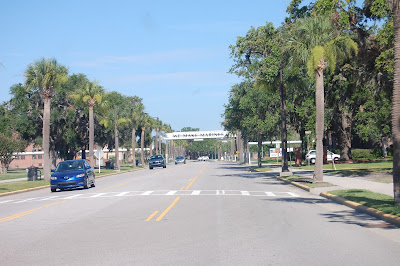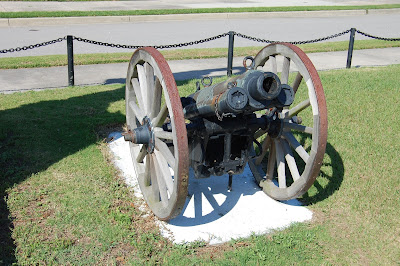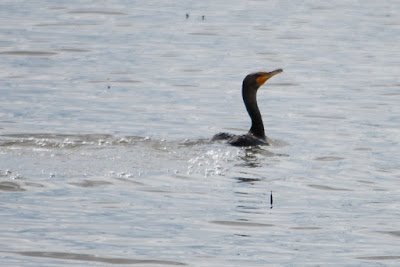
The United States entered World War I on April 6, 1917 and its involvement would last through the end of the war in 1918. While not our longest war and certainly not the war with the greatest loss of American life, this conflict suddenly forced America to confront the realities of new scales of destruction wrought by rapidly advancing technology. Soldiers in this conflict were on a three-dimensional battlefield, with attack coming from the air and beneath the sea surface, as well as horizontally. Airplanes served first as reconnaissance and observation platforms, then carried machine guns and dropped bombs. The guns were bigger, more accurate, artillery more explosive, cavalry was replaced by armored vehicles with guns. Submarines were systematically employed in naval battle and attacking commerce. And then there was the poison gas - chlorine gas, mustard gas - death on an industrial level.

There were 15.5-18.4 million deaths due to the fighting in WWI. Of the dead, 117,465 were Americans. The US military suffered 204,002 wounded in battle and 53,402 killed or missing in action. For the US Marine Corps, there were 2,457 killed or missing in action and 8,894 wounded in action. Many of these Marines had passed through Parris Island, which began functioning as a Marine Corps Recruiting Depot on 1 November 1915.

The mass mobilization of 4.7 million troops, a war involving most of the world's major powers, fighting on foreign battlefields, the large number of Americans buried in foreign cemeteries and the sheer horror of the fighting prompted memorialization of the Great War on a scale rivaled only by the US Civil War. These ranged from the strikingly large Liberty Memorial in Kansas City, MO, the temple like Soldiers Memorial in St. Louis, MO to more simple markers and statues. Some of these statues were of the uniformed "doughboy" from the war and became more informally known as "Iron Mike".
Parris Island's "Iron Mike" is one of the more striking that I have encountered. A battle-ready figured with a water-cooled Maxim machine gun slung over his right shoulder and the his left hand raising aloft an M1911 .45 caliber pistol. Measuring nearly 8-feet tall from heel to pistol tip and placed on a 5-foot 6-inch Stony Creek granite pedestal in front of the Parris Island Headquarters and Service Battalion's barracks, this Marine figure is imposing. The base bears the inscription "In memory of the men of Parris Island that gave their lives in the World War, erected by their comrades".
Officially known as
Monument to the United States Marines, the bronze statue was created by Robert Ingersoll Aitken, who also designed the pediment of the US Supreme Court Building in Washington, DC. Not only was Aitken a well-known sculptor, he had served as a captain of a machine gun unit in the US Army's 306th Infantry Regiment. The funds for the monument were apparently being raised informally by officers and enlisted men during the war to memorialize their fallen comrades. Brigadier General Eli Cole, who commanded Parris Island before going to France in 1918 and returned to Parris Island September 1919. With $8000 raised, Captain Aitken was commissioned to design the monument. By October 1922, a site had been selected in front of the Post Inn (Hostess House) with an unobstructed view of the parade deck (which lacked grandstands at the time) and Boulevard de France.

Aitken had a wax model ready for examination in February 1923, and the design had been approved in March by Major General Marine Commandant John A. Lejeune and the Commissioner of the US Commission ofFine Arts. Aitken's plaster model was viewed by and met the approval of Generals Cole and Lejeune in April 1923. The statue was cast in bronze by Rowan Bronze Works and was ready for dedication on 25 July 1924. General Lejeune gave the primary speech, and Mrs. Nellie Glen (whose two sons were Parris Island men who were killed in WWI) unveiled the statue.
 |
| Dedication of the Memorial to US Marines in 1924 |
Many who have been to Parris Island (visitor, volunteer or draftee) will no doubt note that this is NOT where "Iron Mike" stands today. Expansion of MCRD Parris Island in the run up to WWII necessitated the extension of Panama Street to the west during construction for the 2nd Recruit Training Battalion, The current location is in front of Building 144 at Boulevard de France and Santo Domingo Street.

Getting There
There is only one way onto Parris Island. From US-21 take Malecon Dr. to the Gate. After passing through the gate, you will encounter a traffic circle. Take the third exit (Vieques Rd. to Malecon Rd.), Just keep going straight and Malecon will turn into Boulevard de France. Iron Mike is past the parade deck and Iwo Jima Monument.
You will need a REAL ID compliant drivers license or passport to enter the gate (Missouri, Minnesota, Montana and Maine drivers licenses are not compliant with the REAL ID Act and may not be accepted at federal facilities). Visiting hours are 6 AM to 6 PM. After 6 PM, you must have a military sponsor. If you are visiting a recruit planning to graduate, you will only be able to enter base after 6 PM if you have reservations at the base inn.
Waypoint: Latitude: 32.349221 N; Longitude: 80.675302 W
Street Address: Boulevard de France and Santo Domingo Street, MCRD Parris Island, SC 29905
Further Reading
Postscript
Nadienne and I were eating lunch at Bricks on Boundary in Beaufort, SC before the college graduation. A newly graduated Marine in uniform and his family were leaving and the hostess said "Congratulations! Hope we see you again soon," The young Marine replied 'Thank you, Ma'am, but I hope to never see this place again". I imagine there are many young Marines that feel that way. But he'll change his mind, some day. Maybe.















